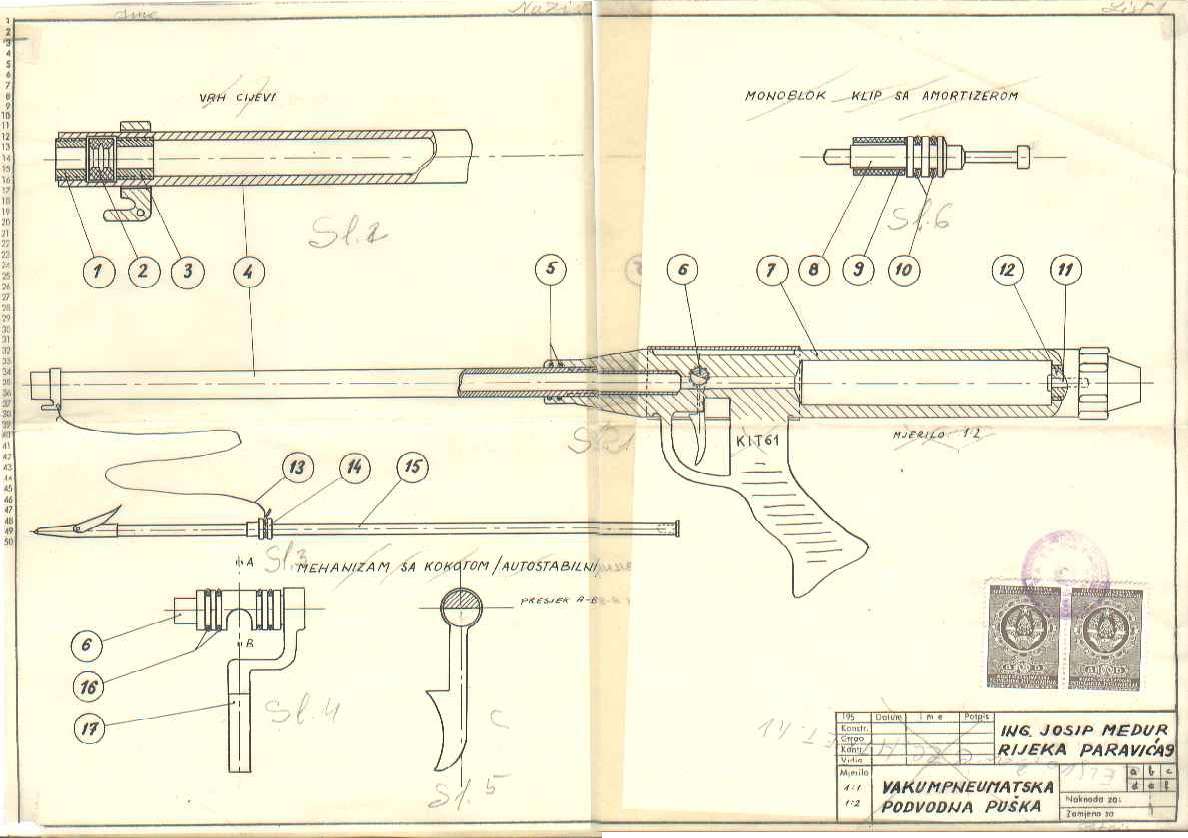An interesting fact is that one of the first, and perhaps the first speargun with compressed air is from Croatia. In the 1950s, at the center for underwater research in Rijeka, engineer Josip Medur constructed one of the first compressed air spearfishing gun, the Kit-57.
Those rifles represented a technological miracle in the world at that time. The first mass production of customized design, but based on the idea of a vacuum system by Josip Medur, was started by Dragutin Sraga, later his son Rene joined, in Zagreb, Croatia in 1963 until 1994
Un fatto interessante è che uno dei primi, e forse il primo fucile ad aria compressa viene dalla Croazia. Negli anni '50, presso il centro per la ricerca subacquea di Fiume, l'ingegnere Josip Medur costruì uno dei primi fucili ad aria compressa per la pesca subacquea, il Kit-57.
Quei fucili rappresentavano un miracolo tecnologico nel mondo di quel tempo. La prima produzione in serie di design personalizzato, ma basata sull'idea di un sistema per il vuoto di Josip Medur, è stata avviata da Dragutin Sraga, poi affiancato dal figlio Rene, a Zagabria, in Croazia, nel 1963 fino al 1994.
Edited by tromic - 12/21/2022, 08:57 AM
|



